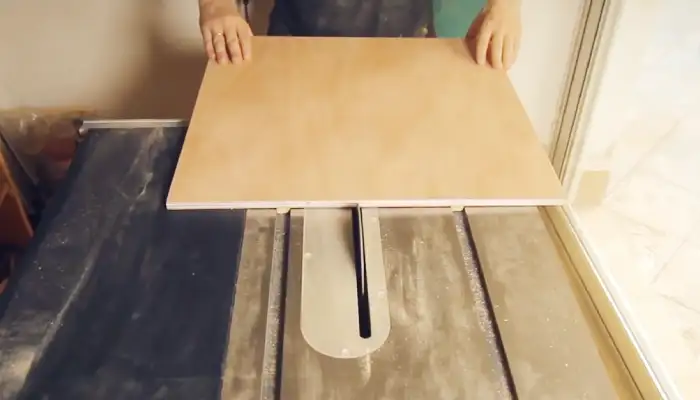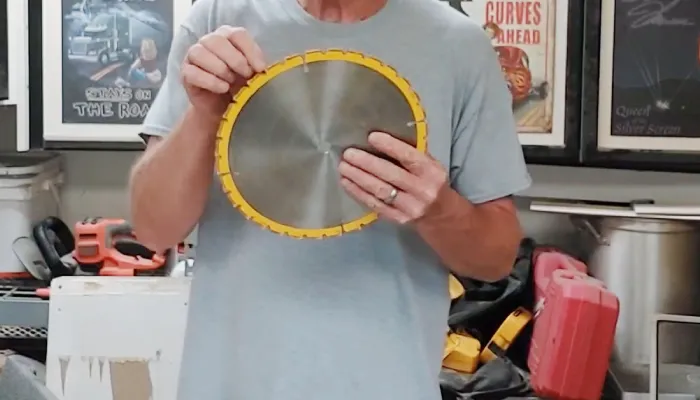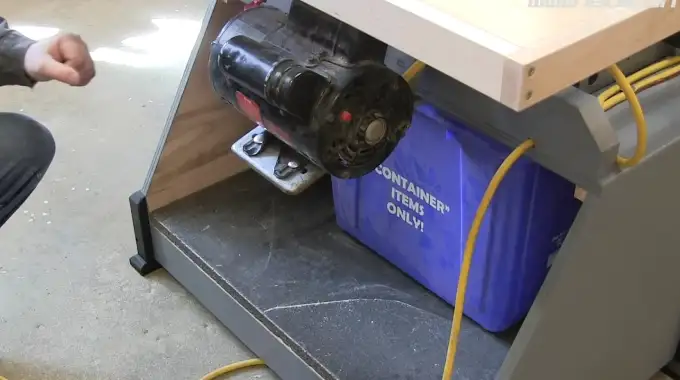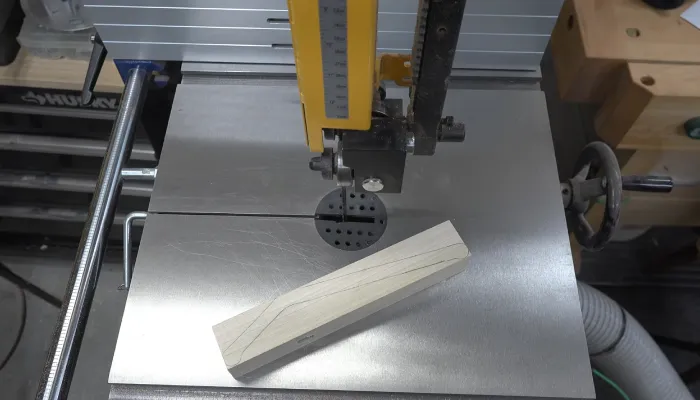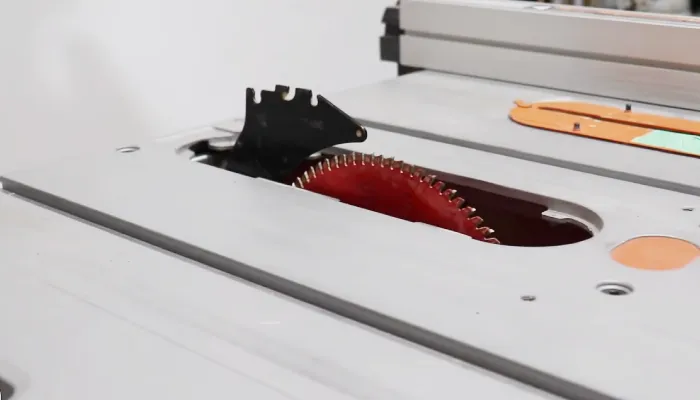How to Use a Table Saw Without a Fence: 4 Steps to Follow
When you encounter irregularly shaped or oversized pieces that defy the constraints of a standard table saw fence, using a table saw without a fence becomes a valuable skill.
I researched whether using a table saw without a fence is possible. While exploring, I discovered that it is possible but not recommended.
However, if you find yourself in a situation where you must make a cut without a fence, I found some helpful steps to ensure that the process is safe and successful.
According to my research, using a table saw without a fence requires marking the cut, adjusting the blade, and using the freehand technique or a guide board to ensure stability.
I will explain in detail how to use a table saw without a fence so you can confidently complete any woodworking project that requires this skill.
How to Use a Table Saw Without a Fence: Step-By-Step Guide
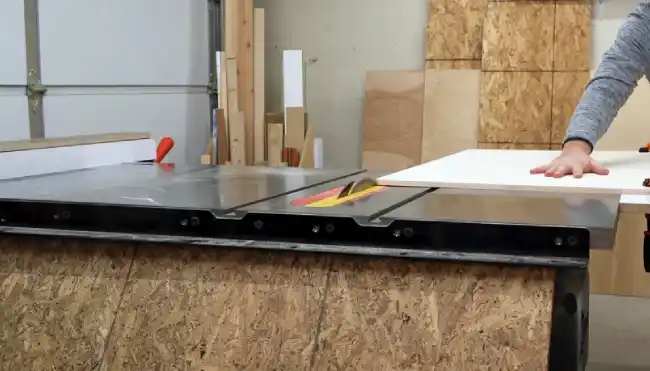
Here I explore the steps you need to follow to use a table saw without a fence.
- Prepare yourself and the table saw
- Mark the cut
- Adjust the blade
- Cut the pieces (Freehand technique or using a guide board)
Step 1: Prepare Yourself and the Table Saw
Before operating a table saw without a fence, ensure that you’re fully prepared and that the table saw is in proper working condition.
Start by prioritizing your safety. Put on safety glasses to protect your eyes from wood splinters and debris. Use hearing protection to guard against the loud noise of the table saw. Wear suitable clothing, avoiding loose items that could get caught.
You shouldn’t wear safety gloves while operating a table saw, even though they might seem like a good idea. Gloves can increase the risk of accidents by getting caught in the machinery or hindering your ability to maintain a firm grip on the workpiece.
Before starting any cutting operation, thoroughly inspect the table saw. Check for loose bolts, damaged parts, and signs of wear and tear. Pay special attention to the blade, ensuring it’s sharp and properly secured.
Confirm that all safety features are functional, including the blade guard, anti-kickback pawls, and riving knife. Create a clutter-free workspace by removing unnecessary tools, materials, and debris. A clean and organized workspace enhances safety and allows for better focus.
Step 2: Mark the Cut
Once you have prepared yourself and your table saw, mark the cut line on your board where you want the angled rip cut to be. Use a straight edge, such as a ruler or carpenter’s square, to draw the cut line on the board. Make a clear and straight mark with a pencil or fine-tipped marker.
Step 3: Adjust the Blade
Now that you have marked the cut and ensured stability with a sliding fence, it’s time to adjust the blade on your table saw without a fence.
Locate the adjustment mechanism on your table saw, usually a height adjustment wheel or crank. Make sure the saw is powered off and unplugged before proceeding.
Use the height adjustment mechanism to raise or lower the blade to the desired cutting height. Consult your table saw’s user manual for specific instructions on adjusting the blade height.
Once you have achieved the desired height and alignment, secure the blade in place by tightening the locking mechanism. This will prevent any unintentional movement during operation.
Additionally, check that the blade guard and anti-kickback pawls are correctly positioned and functioning to ensure safety during cutting through the table saw.
Step 4: Cut the Pieces (Freehand Technique or Using a Guide Board)
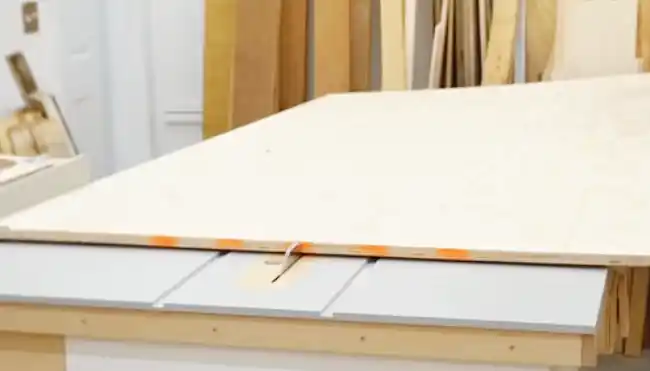
Now comes the critical step of executing the cut. There are two main approaches: using a freehand technique or employing a guide board for added stability.
- Freehand Technique
To successfully use a table saw without a fence, begin by firmly gripping the board and guiding it along the marked line. Throughout the cutting process, exercise caution and maintain a steady hand. Keep your eyes on the blade and watch your fingers to ensure safety.
As you approach the end of the cut, be extra careful to avoid any sudden movements that could lead to accidents. Practice this freehand technique with precision and confidence.
- Using a Guide Board
When operating a table saw without a fence, secure the guide board firmly to the workpiece to effectively use it as a makeshift fence. Position the guide board parallel to the desired cutting line and securely attach it to prevent movement.
Place the guide board in a way that smoothly guides the workpiece along the table saw surface for accuracy. Maintain a firm grip on the workpiece as you guide it steadily along the guide board. This method provides stability and safety for a straight and controlled cut.
Can you make angled rip cuts without a fence on your table saw?
You can cut angled rips on your table saw without a fence, but it requires careful consideration and attention to safety. When attempting angled rip cuts, ensure the blade is properly adjusted and that you have a clear marking for the cut line.
Exercise caution throughout the cut, especially at the beginning and end. Using a guide board or another stabilizing method is recommended to enhance control and reduce the risk of kickback.
Always prioritize safety measures and consider the difficulty level of the cut before proceeding without a fence, especially if you’re a beginner.
What should you do if you experience kickback while using your table saw without a fence?
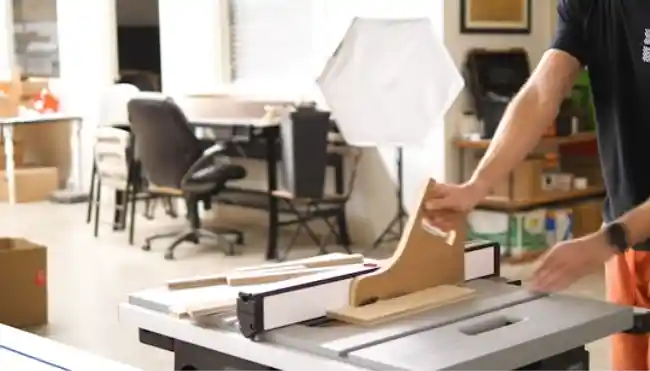
If you have kickback while using your table saw without a fence, immediately release the power switch and ensure the blade has completely stopped.
Kickback is dangerous and can throw the workpiece back at you quickly. Once the blade has stopped, carefully assess the situation to determine if there are any damages or potential hazards.
Examine the wood for any signs of binding or misalignment that may have caused the kickback. Identifying and addressing the root cause is important to prevent future incidents.
Adjust the blade height and angle as necessary and use additional safety devices such as a riving knife or splitter to minimize the risk of kickback. Consider the possibility of a malfunctioning table saw motor as a potential factor in kickback incidents.
Safely Use a Table Saw Without a Fence
Using a table saw with no fence is challenging, but you can master this skill with careful preparation and adherence to safety measures. Wear safety glasses, hearing protection, and suitable clothing, avoiding gloves for a secure grip.
Thoroughly inspect your table saw before marking the cut and adjusting the blade. Choose between the freehand technique or a guide board that I’ve shared in this guide for stability during the cut.
It is always important to maintain a high level of safety when using a table saw. With diligence, you can navigate the intricacies of table saw use, achieving accurate and safe woodworking results.

